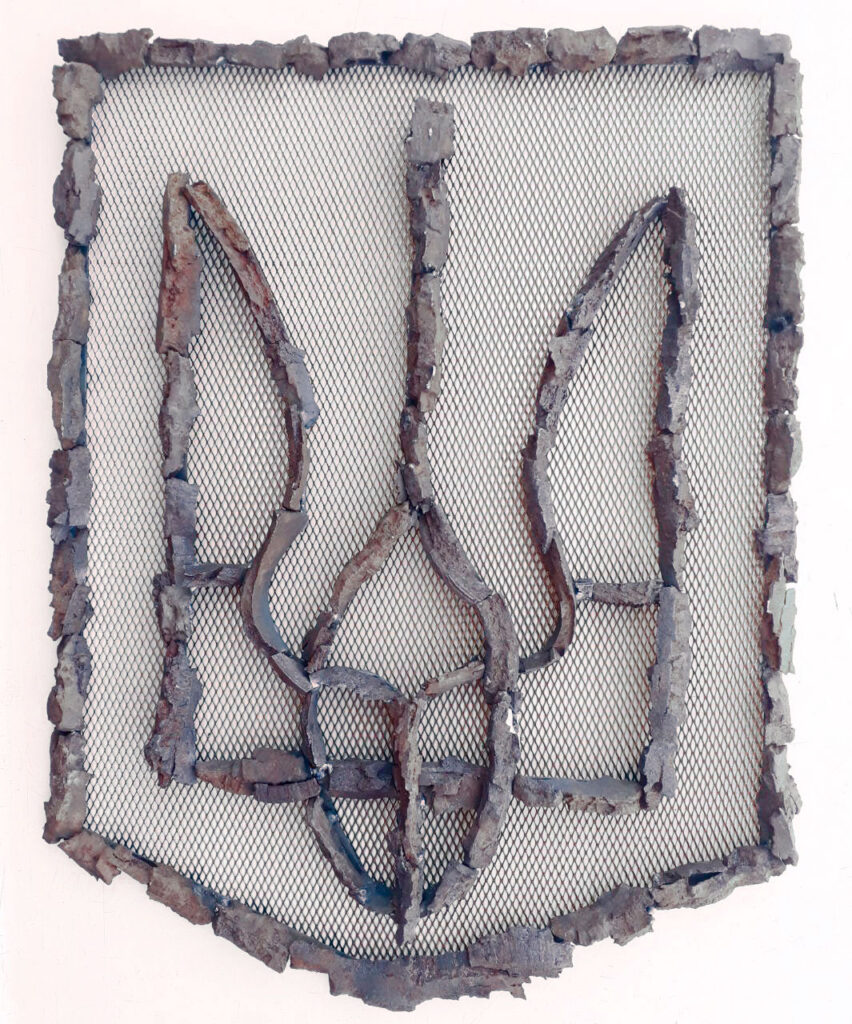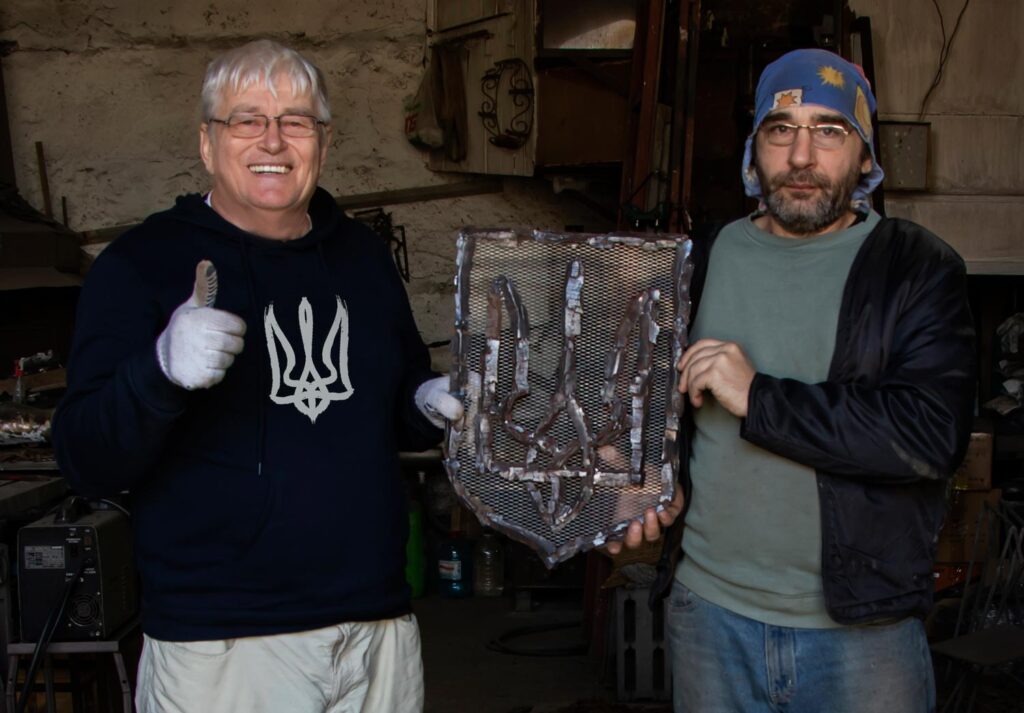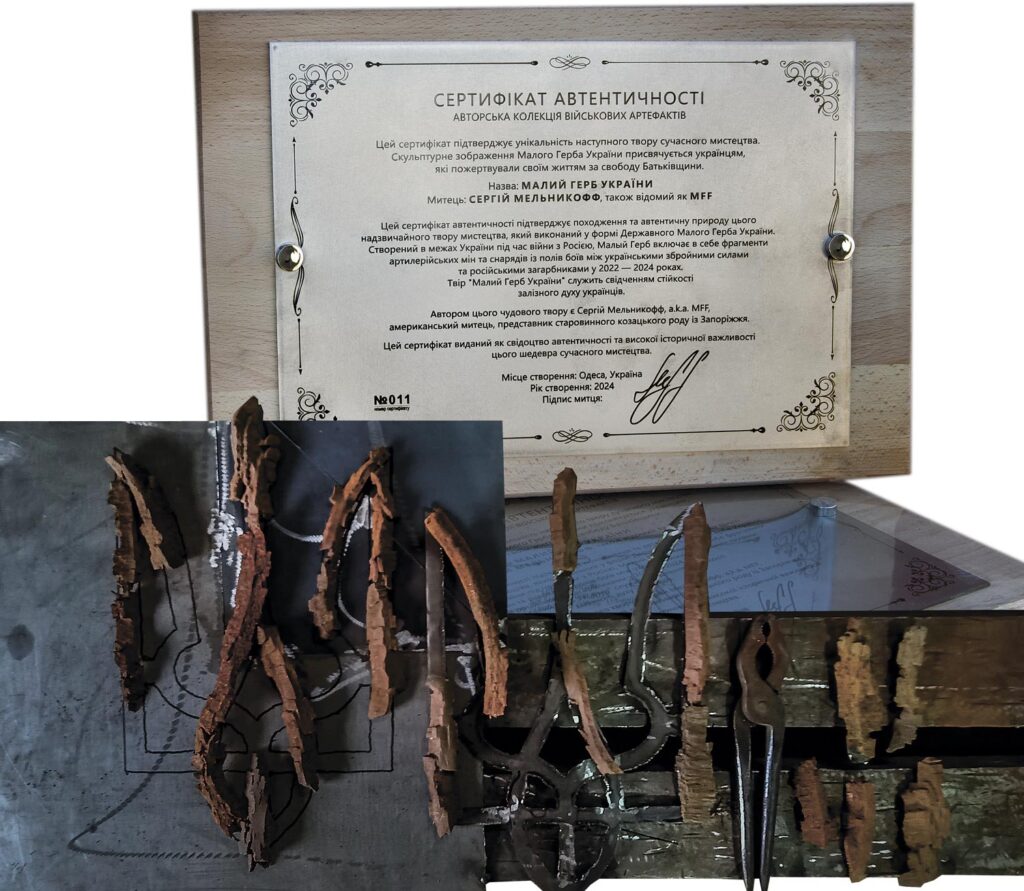Heritage Rising: The Coat of Arms of Ukraine Created from the Ashes of War
Customized Diplomatic Gifts: Crafted from fragments of mines and shells collected from the very battlefields that stood against Russian aggression, this unique creation stands as a testament to resilience and artistry.
Regarding copyright: As of October 28, 2023, Sergey Melnikoff has officially claimed exclusive copyright for the creation and commercialization of state emblems made from materials such as debris from artillery shells, mines, MLRS shells, aerial bombs, and similar sources. The pertinent documentation has been duly filed with the Copyright Office, in accordance with the mandatory deposit requirement (17 U.S.C. section 407). Consequently, any product resembling this nature produced by another party cannot be utilized as an official product or gift within the United States and Europe without obtaining the requisite written permission from the copyright holder.
Introducing the Small State Emblem of Ukraine — a true masterpiece born from the passion of renowned American artist Sergey Melnikoff, also known as MFF!
Crafted from metal collected from the very battlefields that stood against Russian aggression, this unique creation stands as a testament to resilience and artistry. MFF, inspired by Ukraine, turned war fragments into a symbol of strength and beauty — the coat of arms of Ukraine.
Witness the meticulous craftsmanship as each element is expertly soldered to a metal base by Victor Bielchyk, one of Ukraine’s most skilled welders. This collaboration has given rise to a unique sculpture that is bound to captivate with its beauty and power.
But that’s not all! The emblem is not just a symbol; it’s a beacon of goodness. Every penny from the sale of this masterpiece will contribute to the Mother Teresa Rehabilitation Center in Albania. This noble cause aims to bring joy and hope back into the lives of Ukrainian children who have lost limbs due to the harsh realities of Russian aggression.
Measuring an impressive 19,7″ by 15″ (50 by 38 cm), this symbol of unconquered Ukraine is elegantly mounted on a silver-colored metal mesh. Accompanying this exquisite work of art is a certificate of authenticity, meticulously laser-engraved onto a non-ferrous metal plate of A4 dimensions.
Join us in making a difference! Click on the link now to participate in the charity auction and own a piece of history that supports a brighter future for Ukrainian children.
Why Investing in Unique Contemporary Art Sculptures Is Profitable
Investing in unique contemporary art sculptures offers a rare combination of cultural enrichment and financial opportunity. These works, often created by visionary artists, possess qualities that make them valuable not only as artistic expressions but also as appreciating assets.
Firstly, the exclusivity of such pieces enhances their desirability. A unique sculpture stands as a one-of-a-kind creation, often reflecting the artist’s innovation and societal commentary. This singularity ensures a higher potential for value appreciation, especially as the artist gains recognition over time.
Secondly, contemporary art has demonstrated consistent growth in the global market. Auction records for modern and contemporary art highlight the significant returns that collectors can achieve. Sculptures, being tangible and visually striking, often capture attention in ways that paintings or other mediums might not, making them a focal point in auctions and exhibitions.
Additionally, unique sculptures offer investors the opportunity to diversify their portfolios. Unlike stocks or real estate, art is relatively immune to market fluctuations, providing stability during economic uncertainty. As a long-term investment, these pieces often outpace traditional assets in terms of value growth.
Finally, investing in contemporary sculptures allows collectors to contribute to cultural preservation and innovation. By supporting living artists, investors help sustain the creative industries and encourage further artistic development, leaving a legacy of cultural impact.
In conclusion, unique sculptures of contemporary art represent a compelling investment opportunity. They combine financial rewards with the intangible benefits of owning a piece of history, making them an appealing choice for savvy investors and art enthusiasts alike.
“For the Love of Humanity”
vs “For the Love of God”
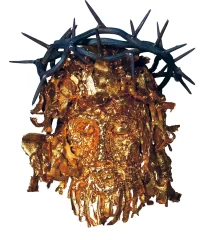
— What a kind and peaceful face! This is the best depiction of Jesus I have ever seen. He embodies confidence in the triumph of good over evil, and his image radiates joy and happiness.
I admire this face. It combines kindness, serenity, wisdom, and bliss. Its message is to do good without looking back. Truly brilliant!
Usually, the face of Jesus reflects suffering, merely conveying pain. But here, there is grandeur, calmness, spiritual strength, and the infinity of life.
I am in awe.
— Lyudmila Leukhina, Art Beauty Industry BIOTECH, Ukraine
The Golden Crucifix is often compared to the renowned artwork “For the Love of God” by British artist Damien Hirst — a platinum skull encrusted with 8,601 diamonds, sold for $100 million. However, there is a fundamental difference between these two works.
While Hirst’s “Diamond Skull” symbolizes luxury and the fetishization of material wealth, Melnikoff’s Golden Crucifix speaks of sacrifice, suffering, and hope. Created from the “ashes of war,” its symbolism is profound, serving as a reminder of conflict’s consequences and the need for peace. Here, gold is not a symbol of wealth but a reflection of faith and hope.
The title of Hirst’s work, “For the Love of God,” is contrasted by Melnikoff’s “For the Love of Humanity,” offering a deeper meaning: art created in service of people as opposed to art aimed at human vanity.
Hirst used the skull to symbolize life’s vanity and transience, while Melnikoff, in crafting his Christ the Savior from the fragments of war munitions, emphasizes the value of every human life, represented by the multitude of shards assembled together.
The crucifix, as a philosophical object, embodies Christ’s sacrifice and suffering for the salvation of humanity, becoming a symbol of hope and faith, in contrast to Hirst’s glamorous materialism focused solely on monetary value.
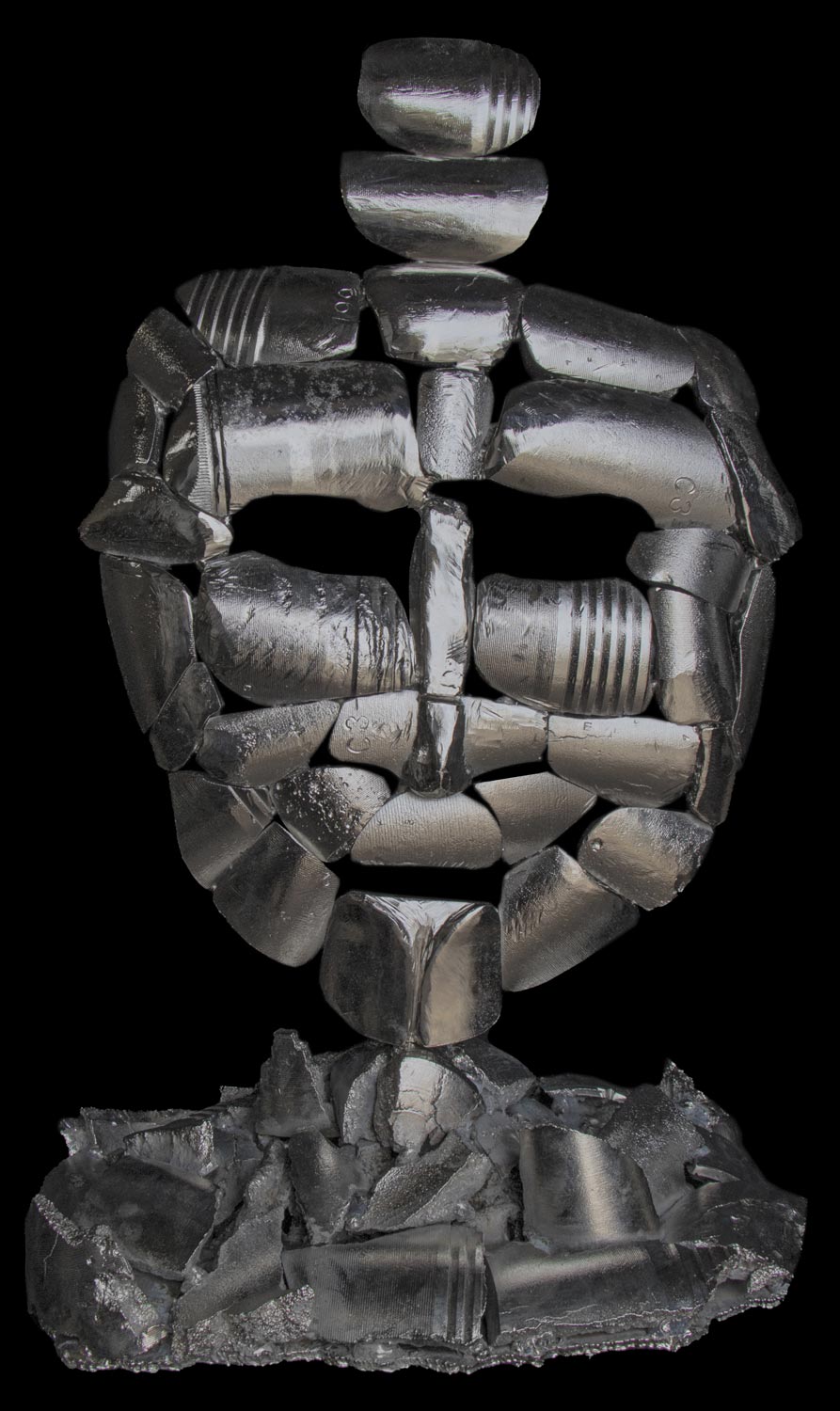
ART OF MFF
Collection of War Artifacts
MASK OF THE WAR GOD
ITZAM KOKAJ BAHLAM
A sculpture made from shrapnel by Sergey Melnikoff, a.k.a. MFF
A magnificent jade face mask was discovered in 2021 in a royal Maya tomb at the Chochkitam site near Petén in northeastern Guatemala. Dated to approximately 350 AD, the mask is made of jade stones and belonged to the local king Itzam Kokaj Bahlam.
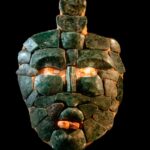
A metal replica of the mask by Sergey Melnikoff is made from polished shrapnel fragments collected in 2024 from the fields of Ukraine, the site of battles with Russian invaders.
The Maya were a deeply spiritual people. Their worldview represented a complex polytheistic religious system. For millennia, their thoughts and actions were inspired by cosmological ideas about time and space, the emergence of humans, and the religious significance of agricultural cycles. This religious system was established in ancient times. The Maya shared many traditions and rituals with other Mesoamerican cultures, which represent a diverse mosaic of similar yet unique traditions for each ethnicity.
The Maya are remembered in history as a very bloodthirsty people. They performed human sacrifices, tore hearts out of living victims, and practiced cannibalism. Therefore, a creation made from the shrapnel of mines exploded on battlefields rightfully symbolizes the god of war.
The metal replica of Itzam Kokaj Bahlam's mask was created by American artist Sergey Melnikoff (a.k.a. MFF) in collaboration with metal specialist Viktor Bielchyk. A skilled Ukrainian craftsman cut large fragments from combat mines and meticulously joined dozens of metal elements to replicate the jade-like design of the mask, which represents one of the Maya rulers from the Chochkitam province. The mask is mounted on a base constructed as a shapeless heap of shrapnel from combat mines and coated with a nickel layer using the electroplating method.
On the video: The carved details of the mask were laid out on a mound of sand, where they were joined together by electric welding.
